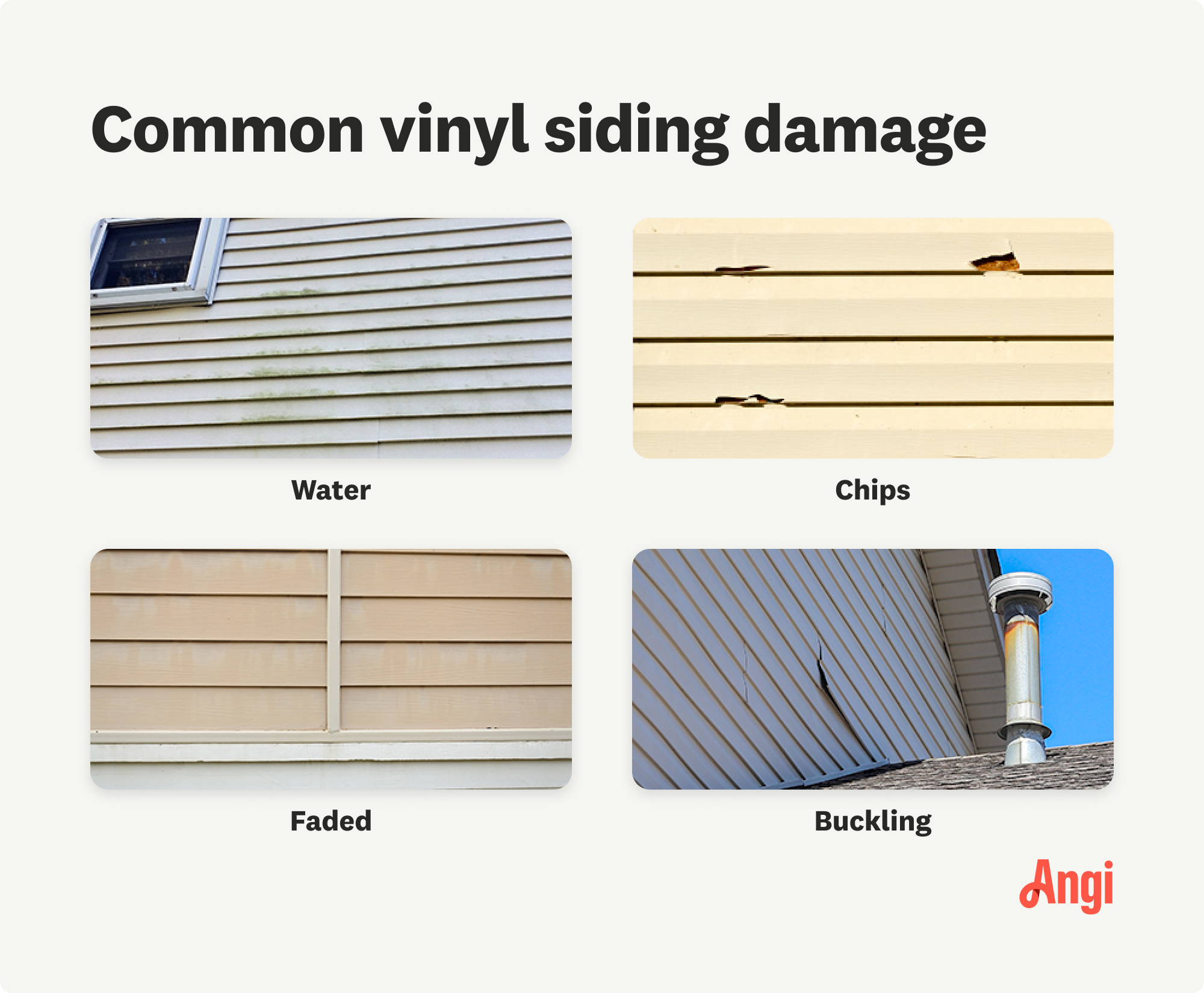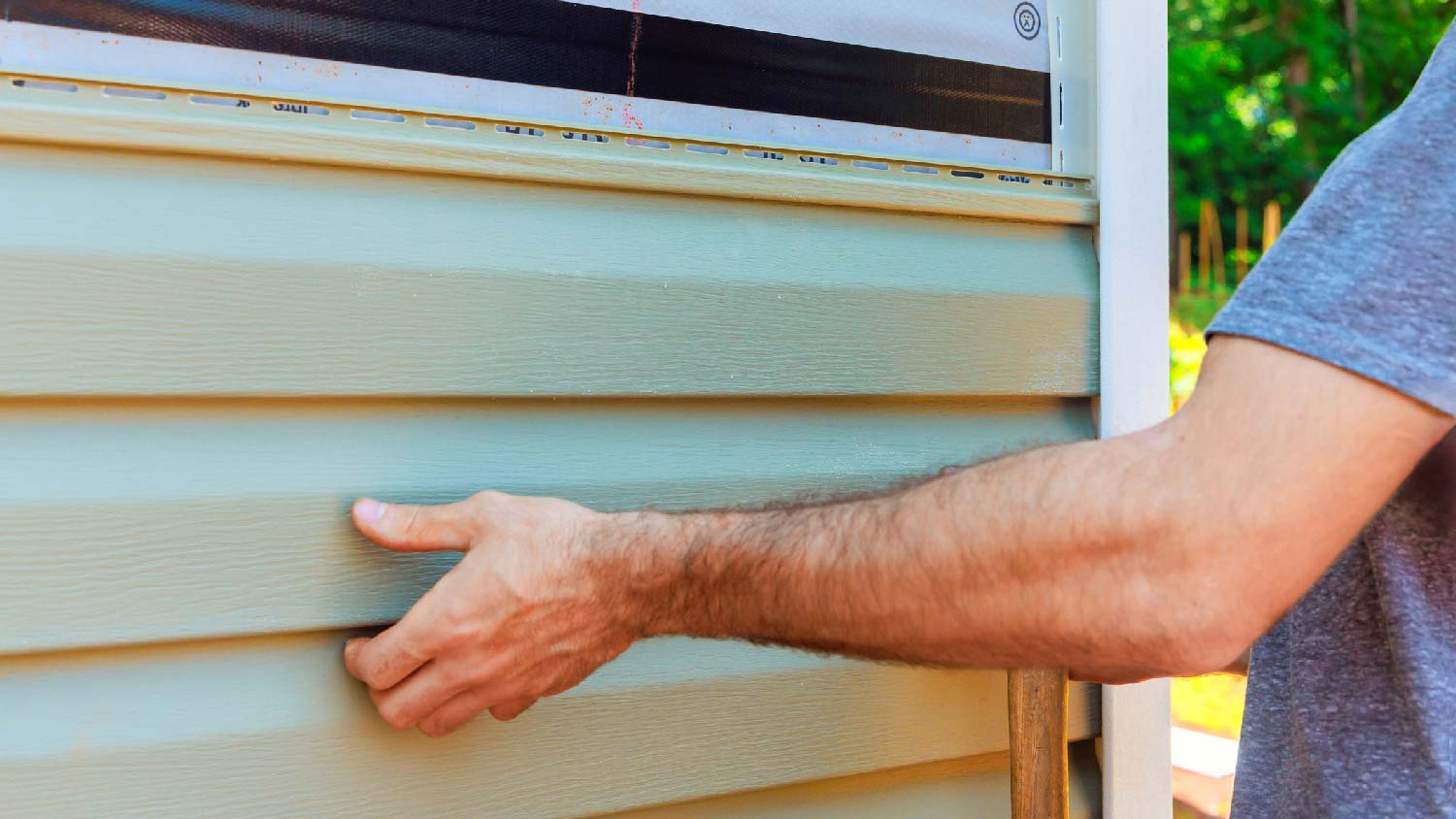
The cost of siding repair varies depending on material, design, and damage. This helpful guide covers the siding repair costs to expect in Columbus, Ohio.
Keep your house protected and looking great


Old or damaged siding can lead to moisture problems, pest infestations, and damaged home exterior components.
Signs you need to replace your siding include warping, cracking, discoloration, rot, and mold or fungus growth.
Siding that’s near the end of its lifespan should be replaced rather than repaired to prevent future problems.
Your home’s siding is its defense against the elements, and when it’s damaged or at the end of its lifespan, it can lead to problems like moisture intrusion, pest infestations, and damage to your exterior walls. You can prevent this damage by replacing your old or damaged siding, so it’s important to know what to look for. These nine signs will help you know when it’s time to replace your siding.

Over time, your siding may become less effective due to impact damage, moisture problems, material degradation, or lack of maintenance. Allowing siding problems to persist can lead to serious damage and costly repairs. Keep an eye out for these signs that it’s time to replace your siding.
Siding that no longer lies flat and remains intact can be a sign that the material is breaking down and no longer protecting your home. Warping, cracking, or siding that’s pulled away from the exterior walls can allow moisture to enter between the siding and your home’s exterior, causing serious damage.
Vinyl siding is particularly susceptible to fading the longer it’s exposed to UV rays. If your siding is faded, it may indicate that it’s nearing the end of its lifespan. Other materials like wood or stucco can become discolored once they’re damaged by water or if the sealant used is no longer effective.
Water stains and bubbling or blistering siding are sure signs that your siding has water damage. These signs indicate that water has gotten underneath the siding, which can cause serious damage to your home’s exterior walls.
If your siding has visible mold, mildew, fungus, or rot, you know there’s a moisture problem that needs to be fixed. Not all mold or mildew growth is a sign your siding needs to be replaced, but it’s important to have a professional evaluate the problem and find and fix the moisture source. Fungus and rot on wood siding indicate that the protective sealant is failing and the wood has been weakened.
Old, brittle siding is particularly susceptible to pest intrusion. If you see signs of pest damage like holes, chew marks, nests, or increased pest activity, your siding may be vulnerable, allowing pests access to your home.

How long siding lasts depends on the material it’s made of and environmental conditions, but all types of siding have a finite lifespan. Vinyl, wood, and engineered wood last an average of 20 to 40 years, while fiber cement and aluminum siding last an average of 30 to 50 years. Some materials, like brick, stone, and stucco, can last 50 to 100 years if maintained properly.
The older your siding is, the more likely you’ll run into problems with discontinued siding, which can make doing a partial replacement difficult. If your siding is nearing the end of its expected lifespan, a full replacement can help avoid further problems.
If you regularly need to repair damaged siding, it can be a sign that the siding itself is failing. Frequent repairs are a clue that your siding is vulnerable to damage and that it’s time for a replacement.
Siding helps insulate your home and keep your energy costs down. If you see an increase in your energy bills without a significant change in usage, it may be due to your siding failing and no longer insulating properly.
Signs of failing siding can show up inside your home as well. Peeling or bubbling paint or wallpaper can be a sign of water intrusion that starts at your home’s exterior and makes its way to interior walls.
If you notice one or more of these signs, contact a local siding pro to assess your current siding and determine if it needs to be replaced. Hiring a siding contractor ensures the project will go smoothly. They’ll remove your old siding, obtain any necessary permits for siding replacement, advise you on the best time to replace siding, and properly install your new siding.
Unless you have experience removing old siding, measuring for siding, and installing new siding, it’s best to leave this job to the pros. Improperly installed siding can seriously damage your home and may affect your homeowners insurance coverage. Call a siding pro to ensure your new siding is installed correctly.
While some siding is simply too old to function properly, there are some steps you can take to prevent other kinds of damage that may shorten its lifespan.
Repair damage immediately. Allowing damage to remain unrepaired will only make the problem worse.
Keep up with cleaning and maintenance. Regularly clean and maintain your siding according to the manufacturer’s instructions.
Reseal as needed. If you have wood siding that requires a sealant, reseal it according to the manufacturer or installer’s recommendations before you notice damage.
While some siding is simply too old to function properly, there are some steps you can take to prevent other kinds of damage that may shorten its lifespan.
Repair damage immediately. Allowing damage to remain unrepaired will only make the problem worse.
Keep up with cleaning and maintenance. Regularly clean and maintain your siding according to the manufacturer’s instructions.
Reseal as needed. If you have wood siding that requires a sealant, reseal it according to the manufacturer or installer’s recommendations before you notice damage.
The cost to replace siding averages between $5,600 and $17,600. Prices can range between $2 and $30 per square foot, depending on the siding material. Costs will also vary based on where you live, labor costs, the size and complexity of your home, and the condition of your old siding and the exterior walls.
From average costs to expert advice, get all the answers you need to get your job done.

The cost of siding repair varies depending on material, design, and damage. This helpful guide covers the siding repair costs to expect in Columbus, Ohio.

Fiber cement siding is durable, fire-resistant, and affordable. Learn more about fiber cement installation costs in Columbus, OH.

In addition to protecting against extreme Midwest temperatures, new siding in Columbus adds curb appeal. Learn about siding replacement cost in Columbus.

Knowing whether to install windows or siding first can save you time and money on your renovations. Here’s everything you need to know before you get started.

Faded vinyl siding makes your home an eyesore. Here are some simple methods to remove built-up and restore color to faded vinyl siding.

If you have woodpeckers pecking on your house, you may be at your wit's end. Read this to learn how to stop woodpeckers from pecking your house.